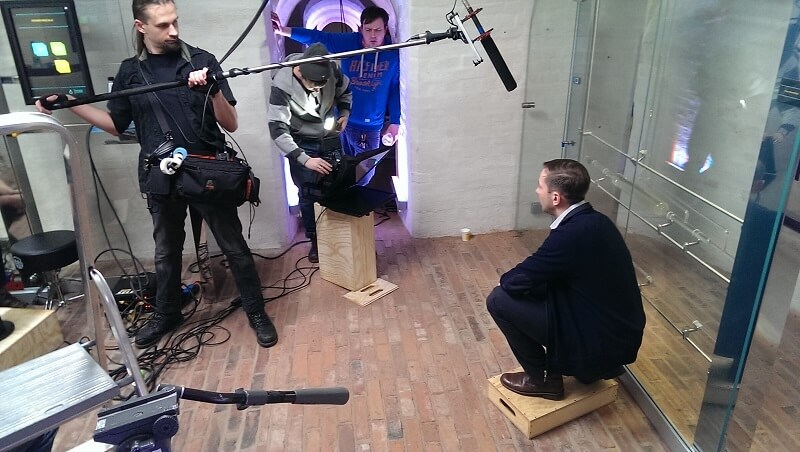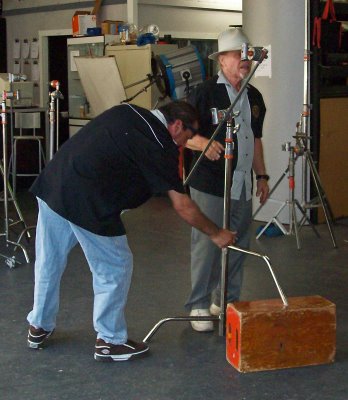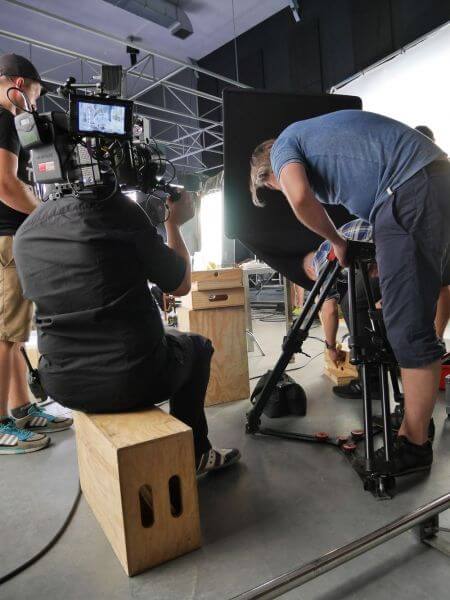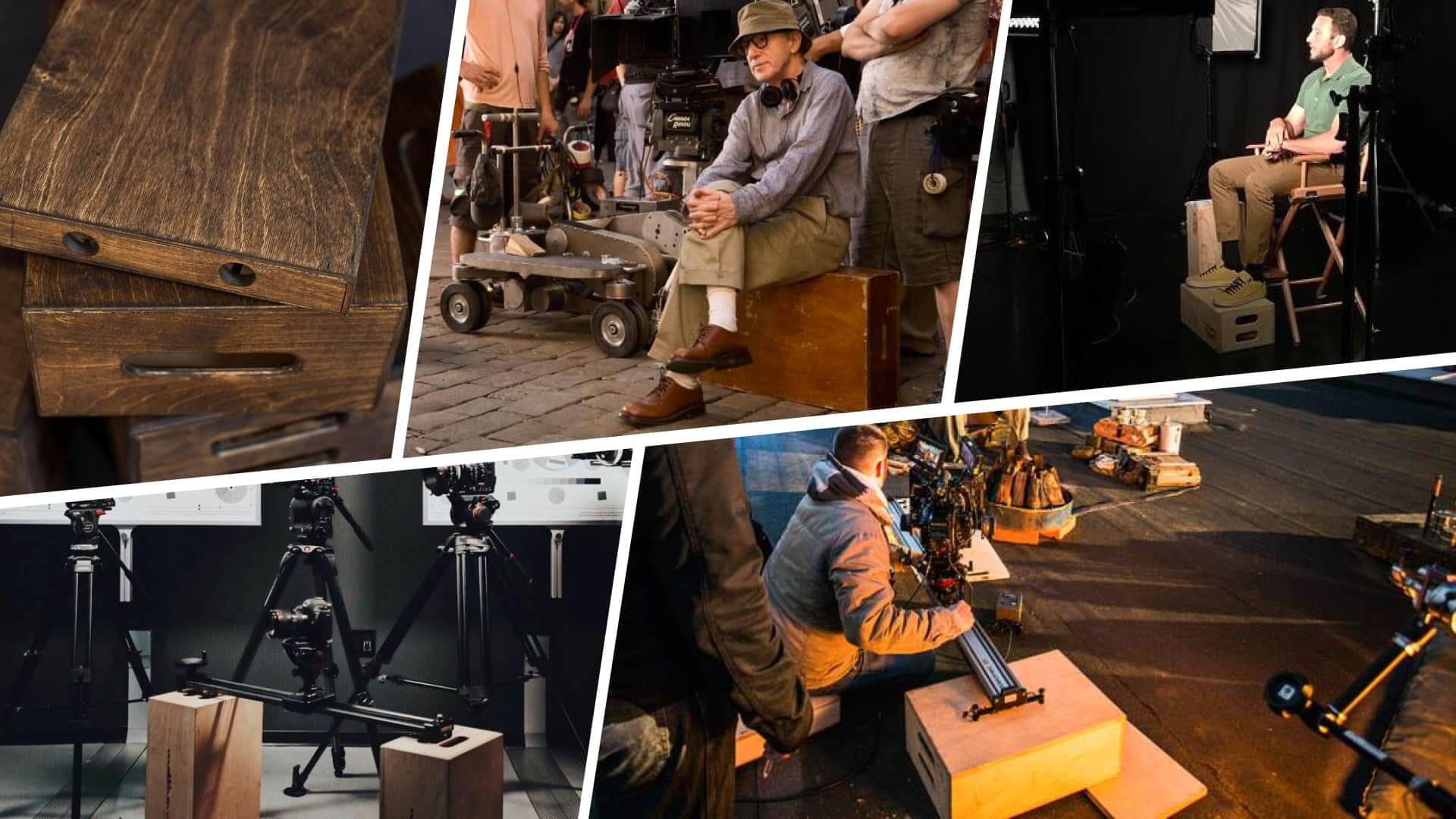In the world of film production, every piece of equipment, big or small, plays a crucial role. One such unsung hero is the humble apple box. This article will delve into what an apple box is, its origins, and its myriad uses on a film set.
What is an Apple Box in Film?
First, let’s define apple box
The use of apple boxes in film production actually stems from their original purpose as shipping crates for apples. They were first used by Hollywood crews in the early 1900s and quickly became an essential tool on sets due to their versatility and availability.
Over time, they have become a staple in the film industry and can be found on almost every set. Let’s look at the definition of apple box before we look at the plethora of its functions.
APPLE BOX FILM DEFINITION
What is an apple box in film?
An apple box is a wooden box used in film production. They earned their name because they resemble crates used for shipping apples. These boxes come in four standard sizes. The most common sizes are a full apple box, half apple box, quarter apple box, and pancake. Each size serves a specific purpose and can be utilized in many ways. The common sizes are as follows: full (20" x 12" x 8"), half (20" x 12" x 4"), quarter (20" x 12" x 2") and pancake (20" x 12" x 1").
What is an Apple Box in Film Used For?
- Leveling Equipment
- Altering Height of Equipment
- Seating and Stepping
- Raising Talent
What is an Apple Box in Film Used For?
The versatility of the apple box
An apple box's primary function is to provide elevation. Need to raise an actor a few inches so they're in frame? Use an apple box. Need to prop up a camera for a better angle? An apple box has you covered. Let's look at some of the most common ways apple boxes are used on a film set.
Apple Box Sizes and Uses Explained
Raising Talent
As mentioned before, apple boxes are often used to raise an actor or actress for a scene. This is especially helpful when there is a height difference between two actors in a shot.

Actor on applebox
Stabilizing Equipment
Apple boxes can also be used to provide stability for equipment such as cameras, lights, and tripods. By stacking multiple apple boxes, a camera can be raised to the perfect height and also have a solid base for stability.

Apple Box Filmmaking
Creating Levels
In scenes where multiple actors need to be at different heights, apple boxes can be used to create levels. By stacking them together, an elevated platform can be created for one actor while another stands on the ground. This adds depth and dimension to a shot.
Sitting or Standing
Apple boxes are not just useful for equipment and talent; they can also provide a comfortable seat or standing platform for crew members on set. They are sturdy enough to support the weight of an adult and can be easily moved around as needed.

Sitting on an Apple Box
So, now that we've explored the many versatile uses of an apple box on a film set, you might be wondering how you could get your hands on one of these incredibly useful tools. Well, you're in luck!
The following section will guide you through the process of constructing your own apple box, ensuring you're well-equipped for your next film project. Let's dive into the DIY world of apple boxes.
Related Posts
Apple Box Measurements
How to make an apple box
Constructing your own apple box is surprisingly simple and requires only a few materials. This video by Adam Savage demonstrates how to make your own apple box.
Adam Savage's One Day Builds • How to Make an Apple Box!
To recap this DIY apple box build, you will need:
1. Measure and Mark
Determine the dimensions of the apple box. A standard size is approximately 12" x 8" x 20." Mark these dimensions on the plywood sheets.
2. Cut Plywood Pieces
Use a saw to cut the plywood sheets according to the marked dimensions. You should have five pieces: one bottom, two sides, and two ends.
3. Assemble the Box
Apply wood glue to the edges of the side and end pieces.
Press the pieces together, forming a box shape.
Use clamps to hold the pieces in place while the glue sets. Allow adequate drying time.
4. Reinforce with Screws
Once the glue is dry, reinforce the joints by screwing the pieces together.
Pre-drill holes to prevent splitting.
Use wood screws and a screwdriver or drill for assembly.
5. Add Bottom Piece
Apply glue along the top edges of the box.
Place the bottom piece on the glued edges.
Secure the bottom piece with screws, ensuring a strong bond.
6. Sand the Box
Use medium grit sandpaper to smooth out rough edges and surfaces.
Follow up with fine grit sandpaper for a smoother finish.
7. Final Checks
Ensure all screws are tight, and the box is sturdy.
Sand any remaining rough spots created during screwing.
Optional: Finish the Box
Stain or paint the box for a more polished look.
Allow the finish to dry completely.
By following these steps, you can create a functional and cost-effective apple box for film production.
The apple box may not be the most glamorous piece of equipment on a film set, but it is undeniably one of the most versatile. Its versatility and practicality are a testament to the ingenuity of film crews. While we covered some of the most common ways crews use apple boxes, grips, gaffers, and filmmakers have all found innovative ways to utilize the apple box in getting the shot.
Up Next
What is a C-Stand?
As we continue our exploration into the behind-the-scenes magic of film production, it's time to shift our focus from the modest yet mighty apple box to another essential piece of equipment — the C-Stand. Much like the apple box, the C-Stand may not be a household name, but it plays a pivotal role in the creation of your favorite films and TV shows.
Up Next: C-Stands Explained →
Showcase your vision with elegant shot lists and storyboards.
Create robust and customizable shot lists. Upload images to make storyboards and slideshows.
